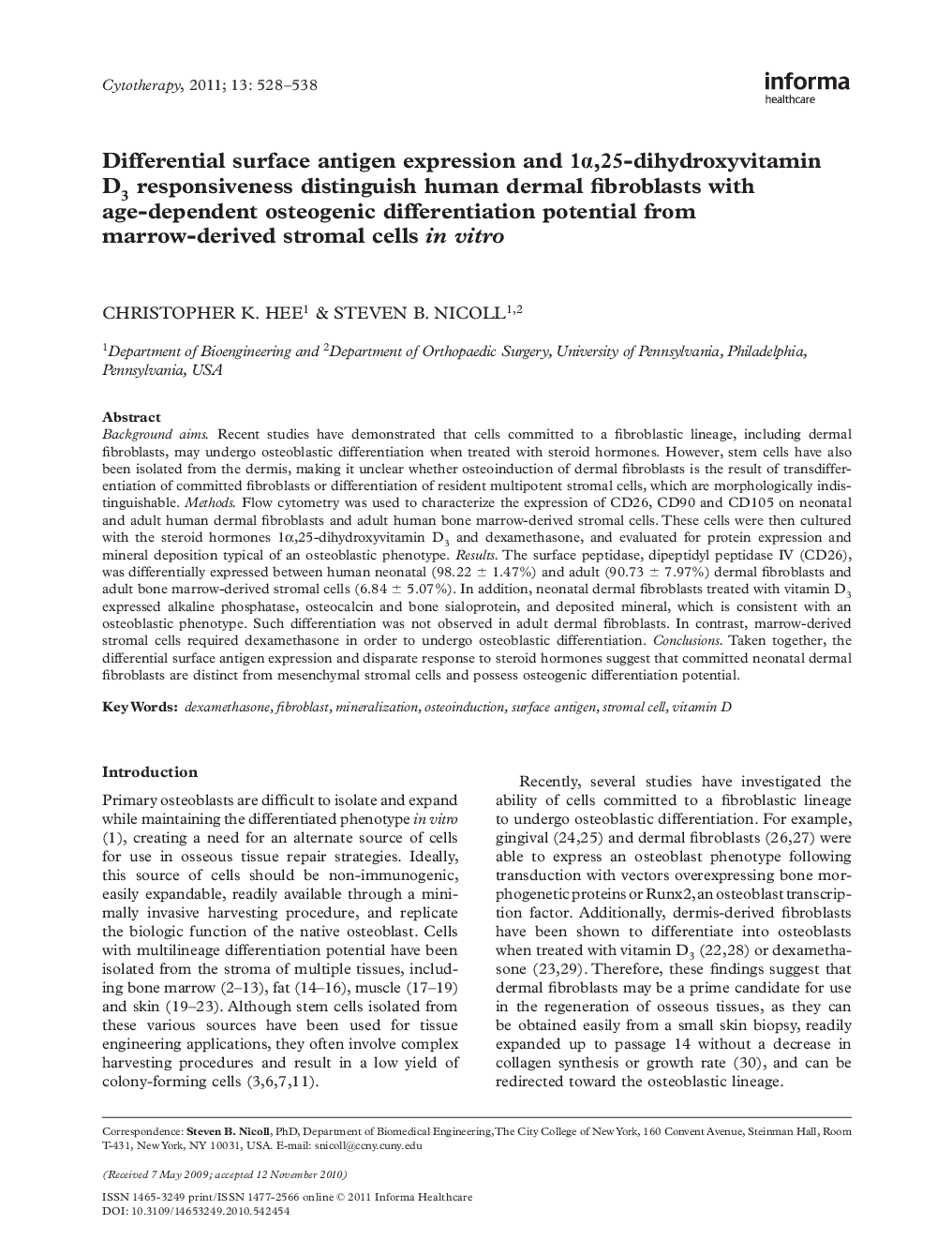| Article ID | Journal | Published Year | Pages | File Type |
|---|---|---|---|---|
| 2171979 | Cytotherapy | 2011 | 11 Pages |
Background aimsRecent studies have demonstrated that cells committed to a fibroblastic lineage, including dermal fibroblasts, may undergo osteoblastic differentiation when treated with steroid hormones. However, stem cells have also been isolated from the dermis, making it unclear whether osteoinduction of dermal fibroblasts is the result of transdifferentiation of committed fibroblasts or differentiation of resident multipotent stromal cells, which are morphologically indistinguishable.MethodsFlow cytometry was used to characterize the expression of CD26, CD90 and CD105 on neonatal and adult human dermal fibroblasts and adult human bone marrow-derived stromal cells. These cells were then cultured with the steroid hormones 1α,25-dihydroxyvitamin D3 and dexamethasone, and evaluated for protein expression and mineral deposition typical of an osteoblastic phenotype.ResultsThe surface peptidase, dipeptidyl peptidase IV (CD26), was differentially expressed between human neonatal (98.22 ± 1.47%) and adult (90.73 ± 7.97%) dermal fibroblasts and adult bone marrow-derived stromal cells (6.84 ± 5.07%). In addition, neonatal dermal fibroblasts treated with vitamin D3 expressed alkaline phosphatase, osteocalcin and bone sialoprotein, and deposited mineral, which is consistent with an osteoblastic phenotype. Such differentiation was not observed in adult dermal fibroblasts. In contrast, marrow-derived stromal cells required dexamethasone in order to undergo osteoblastic differentiation.ConclusionsTaken together, the differential surface antigen expression and disparate response to steroid hormones suggest that committed neonatal dermal fibroblasts are distinct from mesenchymal stromal cells and possess osteogenic differentiation potential.
